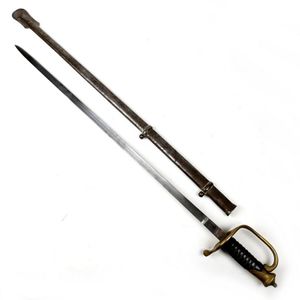Cartier Moonstone and Diamond Bracelet
You must be a subscriber, and be logged in to view price and dealer details.
Subscribe Now to view actual auction price for this item
When you subscribe, you have the option of setting the currency in which to display prices to $Au, $US, $NZ or Stg.
- Cabochon Cut in Jewellery - A cabochon cut is a type of gemstone cutting where the stone is cut and polished in a convex shape with a flat bottom and a domed top, with no facets. This type of cut is typically used for opaque or translucent stones that have natural patterns or inclusions that are best displayed in this type of cut. Examples of stones that are often cut as cabochons include turquoise, opal, and moonstone.
- Cartouche - An ornamental panel in the form of of a shield, oval or rectangular scroll with curling edges. It may be carved into the back of a chair or the top of a sideboard, or present on a piece of silver or jewellery, and contain the initials of the original owner, heraldic symbols, or some other inscription, such as the details of a presentation.
In ceramics the term defines the central area of a vase or similar with a decorative border in one of the shapes above, into which a decorative scene or figures have been painted. - Circa - A Latin term meaning 'about', often used in the antique trade to give an approximate date for the piece, usually considered to be five years on either side of the circa year. Thus, circa 1900 means the piece was made about 1900, probably between 1895 and 1905. The expression is sometimes abbreviated to c.1900.
This item has been included into following indexes:
Visually similar items

An Indian copy of a regimental officer's sword, with brass hilt and guard, steel scabbard. Overall length 102 cm.

A gatelink bracelet, 14ct yellow gold, weight 34.74 grams, length 19 cm.

An Art Deco diamond bracelet, the central panel comprising five old European cut diamonds, surrounded by mine cut diamonds all totalling 0.60cts, mounted in platinum and 14ct gold, total length 180 mm

A diamond line bracelet, comprising thirty four round brilliant cut diamonds totalling 13.87cts, mounted in 18ct white gold, total length 175 mm.
